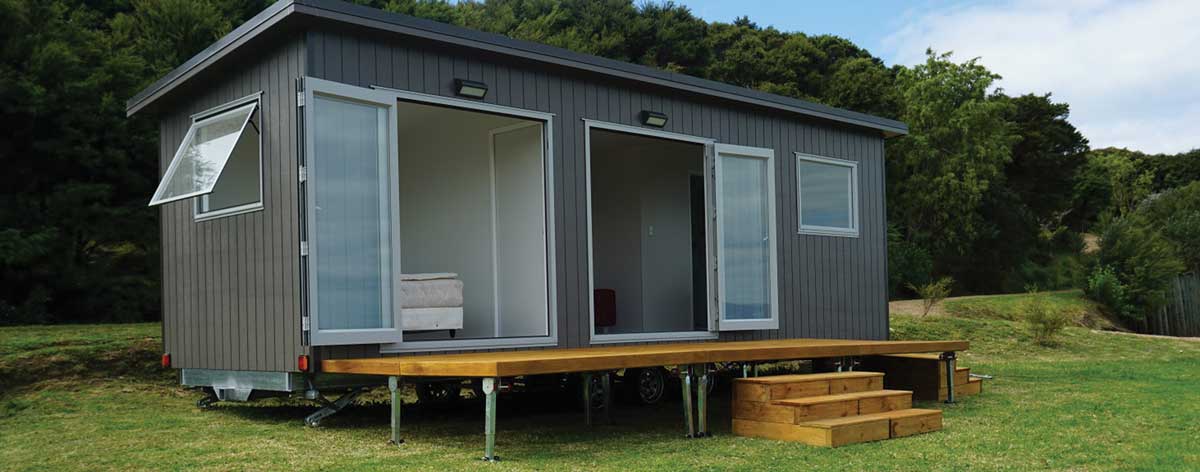Where They Go

Access to Land – the key criteria
The Client secures the land
In order for the manufacturer to provide a unit, the client must tell them where it will be parked. Someone owns the land, and they must have the right to park the unit on their land, and give permission to the client do so. This typically is provided with a license to occupy that specifies the right given and the duration of the occupancy.
Individual Sites
Shared: Typically a family member has a home that is not large enough for a sibling & family, elder parent(s), or adult child who can’t afford their own home. It’s sharing private space that creates tension – bedroom, bathroom and kitchen, so the host agrees to having a mobile home near the main house. Water, wastewater and power is connected to the main house using the same connections as a caravan – no licensed professional required.
Often this is called aroha land meaning the license to occupy is not based on a commercial rent, but what property lawyers call natural love and affection. This inherently implies a social-support network and is a way people can take care of their own without deeply engaging with state support.
Solo: A person or couple or young family buys land and
- Wants to live simply in a tiny home out of choice or to save money
- Wants to build on the site and needs a place to live while they do
A 27 m² home (9×3) is the most efficient way to live. It provides a bedroom to sleep, a lounge for living (including a convertible sofa-bed if space is needed) as well as a bathroom and kitchen. It works best when it has large glass that opens up to the outdoors, unlike a shoe-box apartment in a city high-rise. Installing a full length deck next to it increases the usable space, and a crank-out awning can be attached to the mobile home to further expand usable space.
This works in the mild climate of New Zealand, and it has a long tradition. In precolonial times, kāinga would have wharepuni – the small family home. In pioneering days, the cabin was the size of a contemporary mobile home and these can still be seen in historic districts like Nelson’s South Street.
Pop-up Villages and Group Sites
Kāinga: Kāinga is not limited to Māori, but is an intentional village, meaning the residents share something in common. Typically, the public space includes workshops, meeting halls, even common dining. The Māori term kāinga is used to emphasise it is a long-standing NZ development pattern, and to differentiate it from the undesirable American trailer park model where poor people are allocated defensible space that is a too-small allotment that can spawn conflict that gives trailer-house trash its bad name.
Visitor Clusters: Typically placed at the evening’s destination, such as a five-day cycle trail where there are visitor clusters at the end of every day’s ride, these sites provide both an ensuite bedroom and an outdoor gathering place with covered shared space in the event of inclement weather. In the mountains, at the seashore or just about anywhere there is spectacular scenery in NZ, the beauty of such clusters is their non-commitment of land. They can be tried out, and if they don’t work, move them somewhere else. A variation on this are worker clusters, typically for farm workers.
Special Purpose: The Christchurch Earthquake red-lined 10,000 homes. Kaikoura required emergency mobile housing but it cost $6,000 to move each one by heavy truck. During COVID Level 4 some factories remained open as an essential service manufacturing hospital testing units on skids.
A Comment on Retirement Clusters: Elders often wish to downsize, but the contemporary practice of segregating older people into retirement homes is unnatural and deprives society of the wisdom of age. The kāinga model can provide for old people, but integrates them with young families, couples and solo persons. People are by Nature social. The kāinga model allows for villages infrastructure to be installed in a month, and the units in a day.